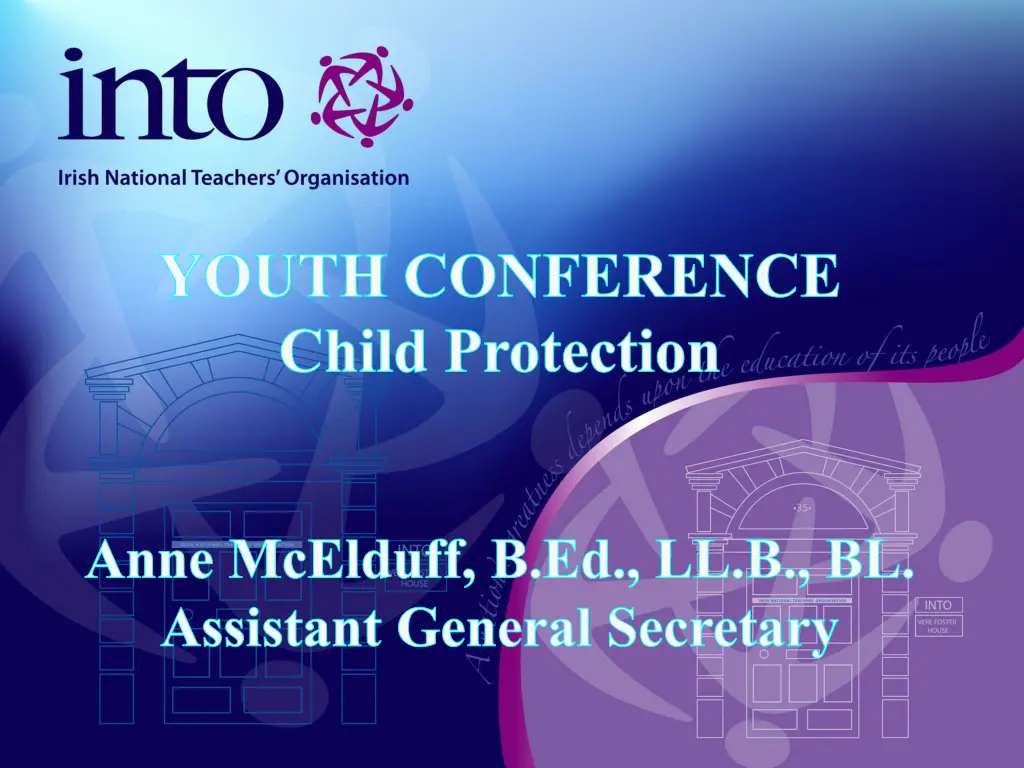
Child Protection Policies and Procedures in Educational Settings
Learn about child protection authorities, staff consultation processes, formal grievance procedures, and the importance of adopting child protection policies in schools. Understand the signs of abuse and how to handle disclosures of neglect, physical, or emotional abuse.
Download Presentation

Please find below an Image/Link to download the presentation.
The content on the website is provided AS IS for your information and personal use only. It may not be sold, licensed, or shared on other websites without obtaining consent from the author. If you encounter any issues during the download, it is possible that the publisher has removed the file from their server.
You are allowed to download the files provided on this website for personal or commercial use, subject to the condition that they are used lawfully. All files are the property of their respective owners.
The content on the website is provided AS IS for your information and personal use only. It may not be sold, licensed, or shared on other websites without obtaining consent from the author.
E N D
Presentation Transcript
YOUTH CONFERENCE Child Protection Anne McElduff, B.Ed., LL.B., BL. Assistant General Secretary
Class Allocation Authority: - DES Circular 16/73 which states: The Principal in consultation with staff, should decide on the organisation of the pupils for teaching purposes Interpretation .is the authority definitive? Education Act, 1998 (S22) states that subject to certain terms, Principals and teachers shall carry out those duties that: (i) in the case of teachers, are assigned to them by or at the direction of the Principal, and (ii) in the case of the Principal, are assigned to him/her by the board
Process..consultationetc How to complain .what to say ..informal/formal ..invoke procedure/or not? How can staff address/seek to resolve their own differences?....informally? formally?
Formally.ie Working Togetherprocedures o Procedure to Address Staff Relations Difficulties o Procedure to Address Adult Bullying/Harassment o Grievance Procedure
Child Protection Authority: o Child Protection Procedures - DES Circular 65/2011 o Children First Act, 2015 o Protection for Persons Reporting Child Abuse Act, 1998 All Boards of Management required to formally adopt and implement these procedures school authorities and school personnel are required to adhere to these procedures in dealing with allegations or suspicions of child abuse
Requirement for a child protection policy template included and provision for review 4 categories of abuse defined .neglect, sexual, physical, emotional Indicators of abuse outlined ..eg o Emotional Abuse imposition of negative attributes on a child ..persistent criticism, sarcasm, hostility or blaming .use of unreasonable or overly harsh disciplinary measures .
o Physical Abuse.use of excessive force in handling ..pushing, shaking .hitting .terrorising with threats . Dealing with disclosures: o Be aware child may be under emotional stress o Reassure ..endeavour to retain trust .whilst also explaining the need for action/to involve other adults . o Assure child everything will be done to protect and support take the concern/disclosure seriously .
o No promises not to tell anyone/explain not possible to keep information a secret . Stay calm .listen V interview .whilst at the same time trying to establish basis of concern/disclosure o Remain non-judgemental .. o Indicate next steps if possible . o Record the disclosure immediately .and as far as possible in child s own words
Role of DLP (deputy DLP) and BofM Role of the CFA/Tusla .ie It is not the responsibility of school personnel to assess or investigate or to make enquiries of parents/carers, and in some cases it could be counter-productive for them to do so. It is a matter for [the CFA/Tusla] to assess and investigate suspected abuse and neglect and determine what action to take, including informing An Garda S och na Follow up will likely be required by DLP/teacher
